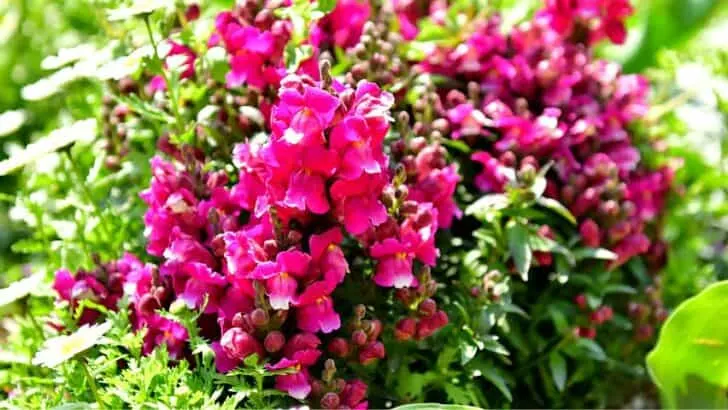If you don’t know what a Snapdragon (Antirrhinum majus L.) looks like, images of a dragon-like flower might come to mind. Indeed, this flower does display similar qualities to a dragon!
But they’re not dangerous like a dragon and are nontoxic to humans and animals. Besides this, they grow in many beautiful colors.
Lee’s have a look at what snapdragon looks like.
Table of Contents
What Does a Snapdragon Look Like?
Snapdragon flowers come in various colors, ranging from bright to pastel shades. They can be ruffled or fringed or have two puffy petals looking like berets stacked on top of each other. A single stalk has small, spiked flowers running along it. They can grow from 1-4 feet tall and is highly diverse.

What Colors Snapdragon Flowers Come In
From bright, vivid hues to lighter pastel shades, snapdragons come in several fabulous colors. These include purple, pink, yellow, red, white, orange, peach, bronze, burgundy, bicolored, and multicolored.
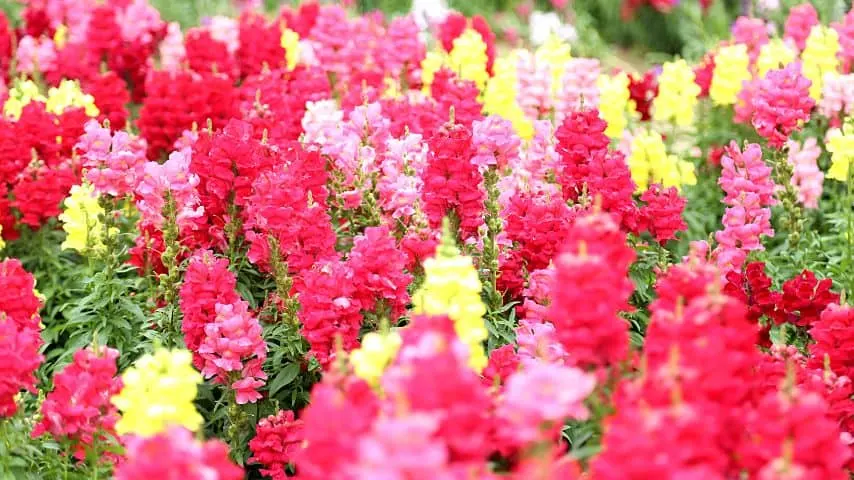
The most common colors of snapdragons are white and light pink. It’s normal for this type of flower to change colors over time.
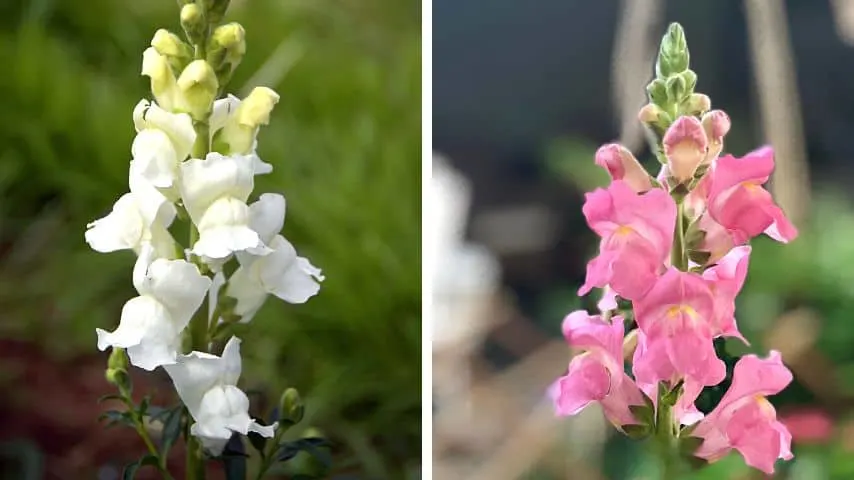
People tend to appreciate this splendid plant for its ostentatious shapes and colors. And it comes in almost every color a flower can grow in, making it a great plant for a balcony planter.
After all, you can match your snapdragons to your indoor or backyard decor.
Doing so can boost curb appeal or give you a reason to smile at home.
What Snapdragon Attracts
Like humans, insects and birds are also attracted to the appearance of this ornate flower. For instance, snapdragons attract bees, butterflies, and hummingbirds.
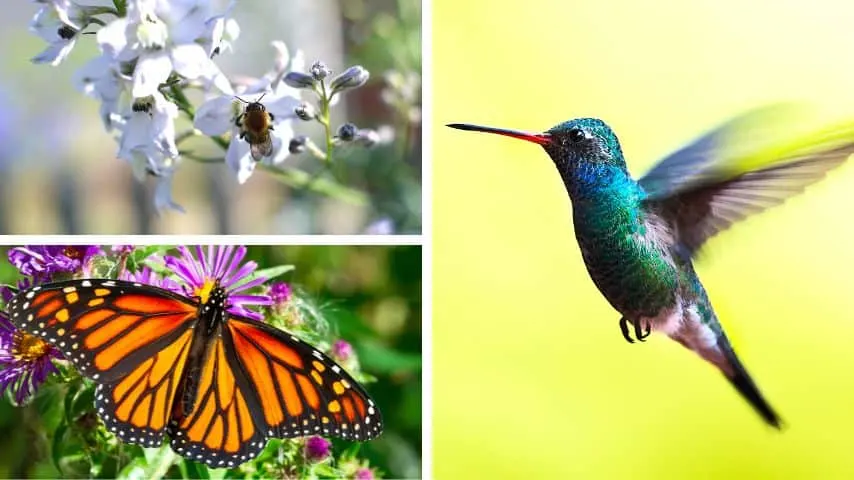
This flower’s main pollinator is the bumblebee. This insect needs to be particularly strong to force open the closed flower.
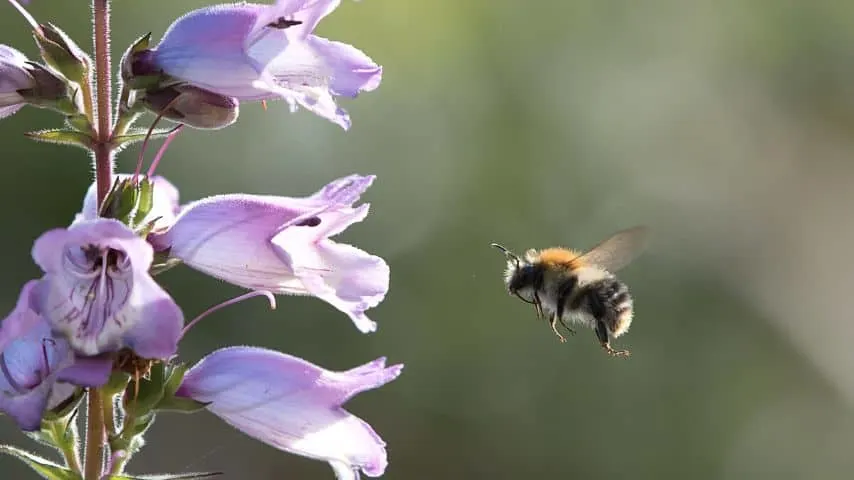
Pollinators memorize color patterns, scents, and flower shapes since they depend on flowers for food. Floral color acts as an advertisement for the quantity and quality of the rewards the pollinator receives when it visits the flower.
How to Identify Snapdragon Plants
The elongated spikes of the flowers grow 3 to f 4.5 cm long.
When you compress the sides of the flower, the two lips will open. This is what is known as the dragon’s mouth.
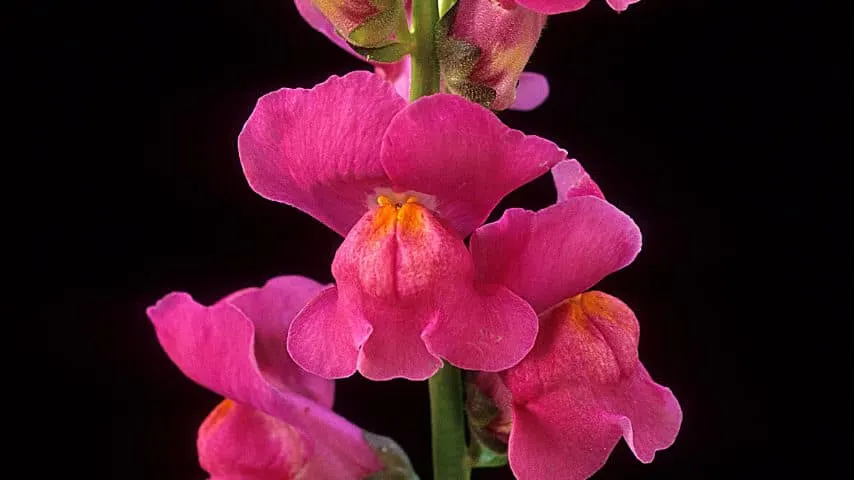
Double snapdragon flowers look sort of like azaleas. But the petals are flatter and more abundant.
People often compare them to butterflies. The single-flower types don’t bloom for as long as the double-flower types.
Most of the wild varieties have pinkish-purple flowers. And where the two lips touch, there are white and yellow areas in these flowers.
Snapdragons Are Diverse
People don’t usually understand how diverse this flower is. This can be because our imaginations are often limited by the typical sizes and colors we see when we visit big box stores.
While some flowers stand upright and are a black color, others are multicolored and weeping.
One of the unique snapdragons is the frosted flame. Some of these types of flowers have bicolored petals.
The leaves can even grow in cream and ivory shades. The blossoms grow in shades of yellow, pink, cream, and red.
Other types of snapdragons you may not have heard of include bright butterfly snapdragons, night and day snapdragons, and black prince snapdragons.
What Snapdragon Cultivars Symbolize
Snapdragons symbolize grace and strength. If you observe this delicately beautiful flower, you may think it’s graceful based on how it looks.
After all, its petals appear to be soft and intricate in a feminine way. When you touch the petals, you can confirm they have a soft texture.
In addition, the snapdragon symbolizes strength because it grows in rocky areas. These distinctive qualities of grace and strength seem to contradict each other.
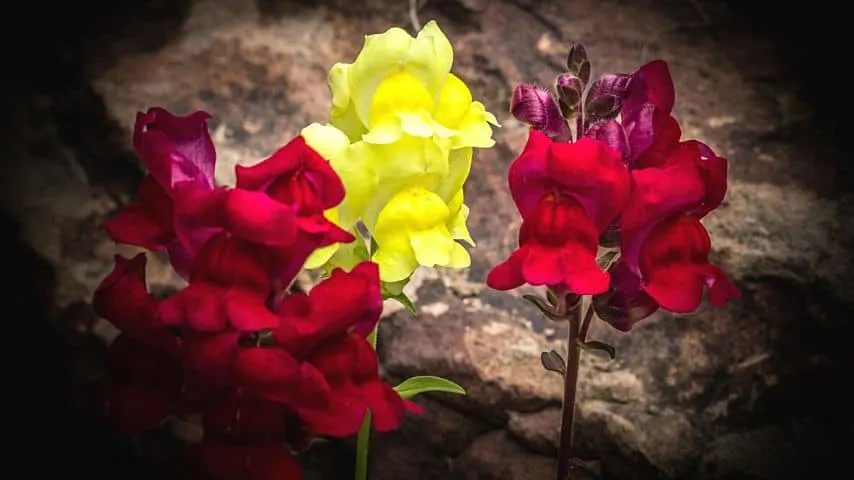
But this is part of what makes the snapdragon stand out among other flowers. Therefore, it can be easy to appreciate the uniqueness of this ornate plant.
Snapdragons are Very Ostentatious
The expressive beauty of the snapdragon can have an intense effect on the viewer. For example, this flower displays a unique shape and numerous colors.
This can make people wonder how nature created such a beautiful plant. In cool weather, the blossoms can be more colorful and intense than mountain wildflowers.
Humans enjoy creating cheerful bouquets with these flowers or planting them in mixed containers. They can make great companions for violas and pansies.
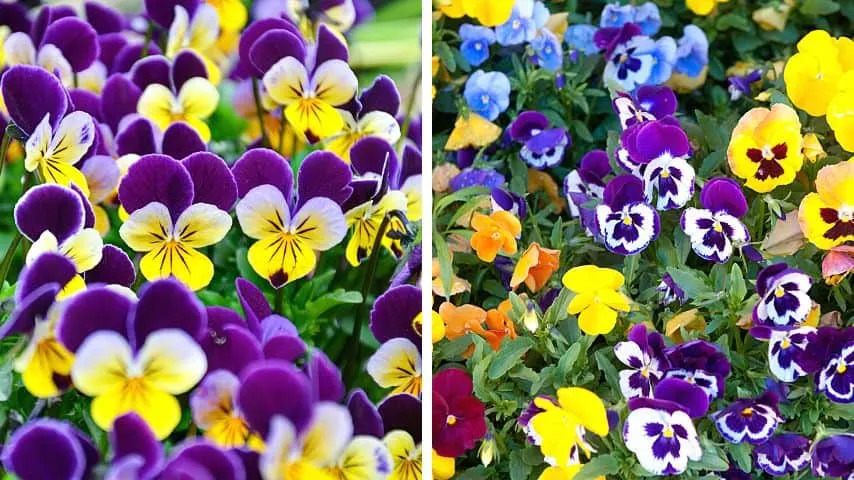
Nearly any garden can benefit from the graceful appearance of the snapdragon. People often use this flamboyant flower to decorate weddings and windowsills.
Snapdragon Seeds
Once Snapdragons die and dry, the seedpods can be saved. The seeds are very small and black or brown.
There are thousands of seeds per gram, according to the University of Florida. The seeds can be used for planting.
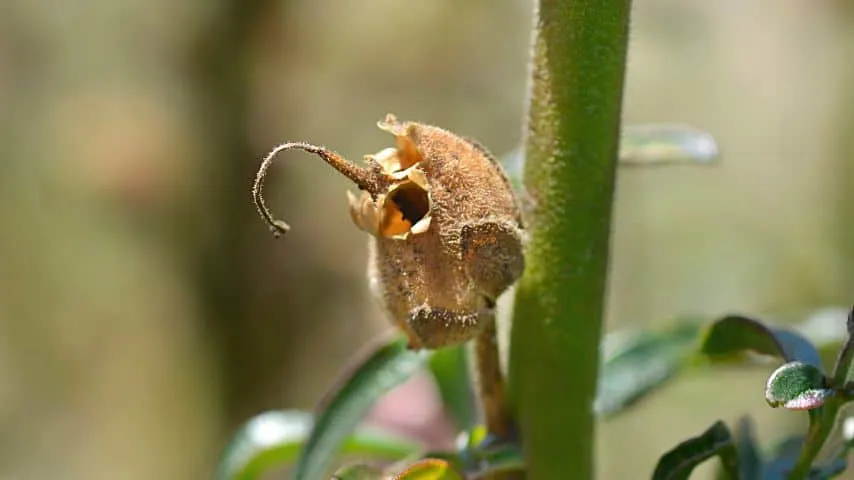
Plant them inside 6-10 weeks before the last frost. Plant the plantlets outside after the last frost, according to Toadstoolseeds.
Read about Dragon’s Breath Celosia care next.
Frequently Asked Questions about What a Snapdragon Looks Like
What are some uses for snapdragons?
The leaves and flowers of snapdragons are used for traditional herbal medicines. For example, they can treat diseases and symptoms such as liver disorders, hemorrhoids, tumors, ulcers, watery eyes, and gum scurvy.
Where do snapdragons come from?
Although no one knows where snapdragons originated, many believe the wildflowers came from Italy and Spain.
Where does the snapdragon get its name?
When someone squeezes the snapdragon’s throat, this causes it to have a reaction where the flower’s “mouth” opens, similar to a dragon’s mouth. Hence, the name “snapdragon.”

Daniel has been a plant enthusiast for over 20 years. He owns hundreds of houseplants and prepares for the chili growing seasons yearly with great anticipation. His favorite plants are plant species in the Araceae family, such as Monstera, Philodendron, and Anthurium. He also loves gardening and is growing hot peppers, tomatoes, and many more vegetables.

